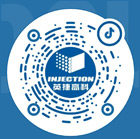PM vs. MIM: The Key Differences Between Powder Compaction and Metal Injection Molding
Powder Metallurgy (PM) Powder Compaction and Metal Injection Molding (MIM) are the two dominant forming processes in the powder metallurgy field. While both rely on metal powders as raw material, they have significant differences in principle, process, application scenarios, costs, and resulting part properties. Understanding these distinctions is crucial for Mechanical Engineers and Global Sourcing Managers selecting the optimal manufacturing method.
01. Process Principle and Steps
Powder Compaction (PM)
Principle: Metal powder is gravity-fed into a rigid die cavity and then compacted at high pressure (typically 100-800 MPa) using upper and lower punches. This forms a "green part," which is then subjected to high-temperature sintering to bond the powder particles and achieve the final component.
Key Steps: Powder Preparation → Blending → Compaction → Ejection → Sintering → Post-processing (e.g., sizing, infiltration, heat treatment).
Metal Injection Molding (MIM)
Principle: Extremely fine metal powder is mixed with a polymeric binder to create a "feedstock." This feedstock is injected into a mold to form a complex-shaped "green part." The binder is then chemically or thermally removed (debinding), followed by a high-temperature sintering stage to achieve a final, high-density component.
Key Steps: Powder and Binder Mixing → Injection Molding → Debinding → Sintering → Post-processing.
02. Part Complexity and Geometric Freedom
| Feature | Powder Compaction (PM) | Metal Injection Molding (MIM) |
| Shape Versatility | Limited. Suitable for parts with simple geometry where the vertical dimension (Z-axis) is significantly smaller than the planar dimensions (X/Y-axis). | High Geometric Freedom. Suitable for small, three-dimensional complex parts, including thin walls, internal threads, side cores, undercuts, and micro-holes. |
| Limitations | Difficult to produce features like side holes, threads, or complex internal cavities. | Virtually no limitations on complexity, making it ideal for complex component design. |
03. Product Precision and Surface Quality
| Feature | Powder Compaction (PM) | Metal Injection Molding (MIM) |
| Dimensional Accuracy | Generally lower, often requires post-sintering sizing or machining. | High Precision. Tolerances often within $\pm 0.3\%$ to $\pm 0.5\%$, and sometimes as tight as $\pm 0.1\%$ for certain features. |
| Surface Finish | Rougher surface finish, usually requiring secondary finishing to improve quality. | Excellent Surface Quality (typically Ra 0.8 to $1.6 \mu m$). Parts often require no secondary finishing, which is a major cost-saving factor. |
04. Material Density and Mechanical Performance
PM: Uses coarser powders. Resultant part density is relatively low (typically below 90% of theoretical density). Mechanical properties are generally isotropic but lower than wrought materials.
MIM: Utilizes extremely fine spherical powders. The sintering process achieves exceptionally high density (typically $>96\%$, often reaching $99\%$). This high density results in superior mechanical properties—often comparable to forged or wrought metals—and exhibits isotropic properties, crucial for high-stress applications like automotive functional components.
05. Production Cost and Batch Applicability
| Feature | Powder Compaction (PM) | Metal Injection Molding (MIM) |
| Tooling Cost | Low. Tooling is simpler. | High. Tooling is complex, often requiring multi-cavity precision molds. |
| Raw Material Cost | Lower (uses coarser, cheaper powder). | Higher (uses extremely fine, spherical powder and polymer binder). |
| Applicability | Ideal for very high-volume production of simple, cost-sensitive components. | Best suited for high-volume production of high-precision, complex parts. Small batch production is generally not economical due to high initial tooling investment. |
06. Summary and Selection Recommendation
| Process | Advantages | Disadvantages |
| PM | Low piece cost, high efficiency, high material utilization, suitable for high volume. | Limited shape complexity, lower density and strength, often requires secondary operation. |
| MIM | Extreme geometric complexity, high precision, superior mechanical performance, excellent surface finish. | Higher initial tooling cost, longer process cycle time, generally limited to smaller parts. |
Selecting the Right Process for Critical Components
The choice between PM and MIM depends entirely on your application's requirements:
Choose PM Compaction: If your part has a simple shape, requires extremely large quantities, and is highly sensitive to cost, PM is the more economical option.
Choose MIM (with CHINAMIM): If your part is small, highly complex, requires high precision, and your application demands strict mechanical performance standards (e.g., stress/fatigue resistance)—such as components for surgical robots, fuel injectors, or military equipment—MIM is the superior solution.

 中文
中文
 英文
英文






